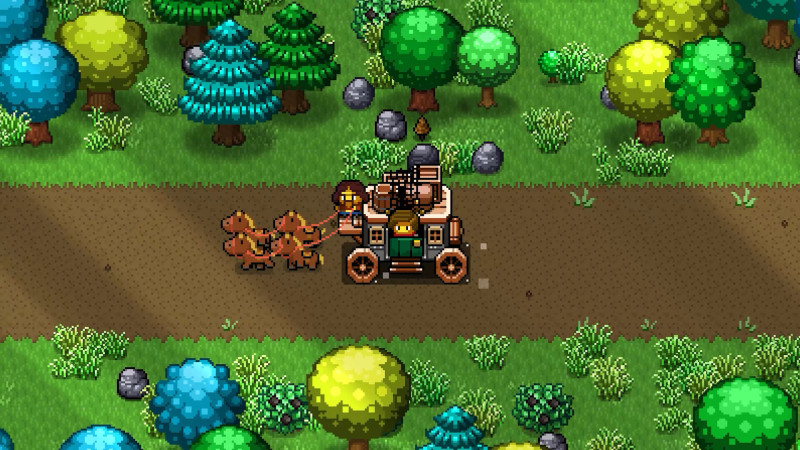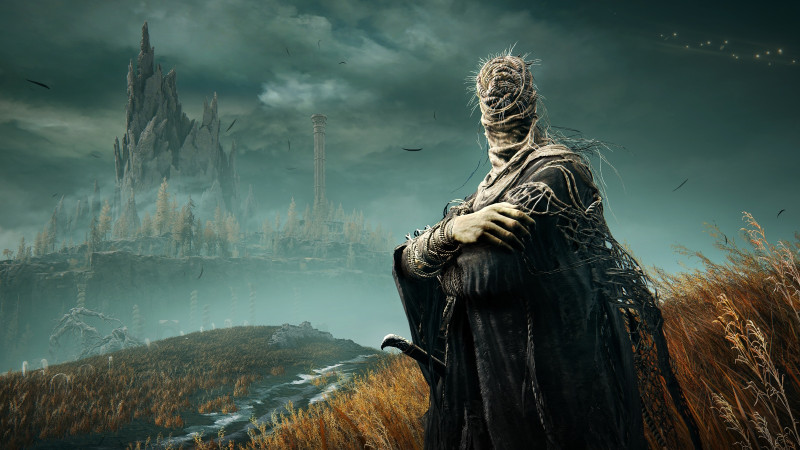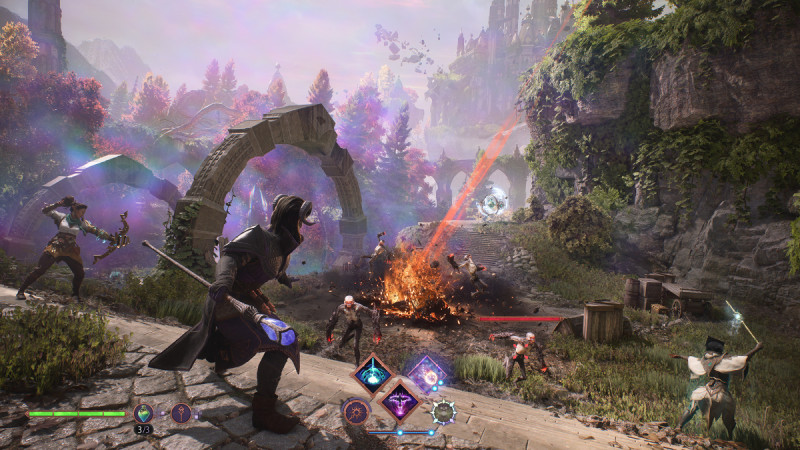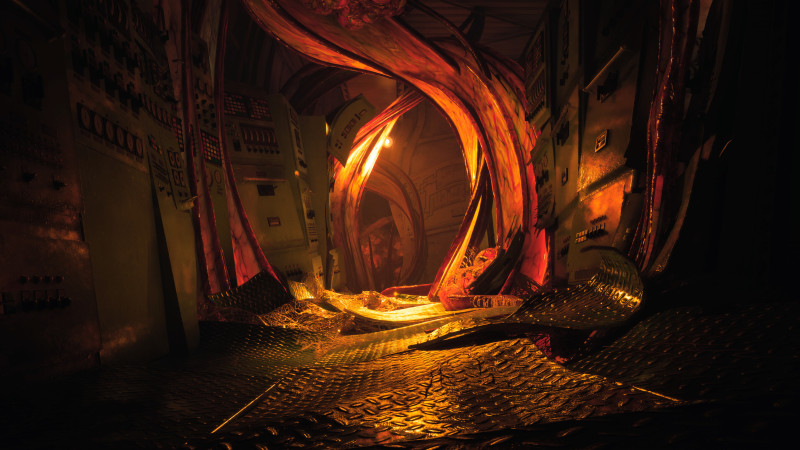There’s something quite special about Still Wakes the Deep. A horror game, quintessentially Scottish through and through, with an atmosphere so tense you could hear your heart pounding as you explore areas, has the right ingredients to make for a memorable experience. Additionally, it’s made by The Chinese Room, the studio behind multi-awarded titles such as Dear Esther, Everybody’s Gone to the Rapture, and Amnesia: A Machine for Pigs. And yet despite these advantages, it still falters when it comes to the fundamental facets.
Still Wakes the Deeps puts you in the shoes of Cameron “Caz” McLeary, an engineer working aboard the Beira D oil rig, which is located somewhere in the North Sea. Caz, who’s having domestic troubles, will soon experience much worse, as what was initially thought of as a machinery malfunction leads to something darker and deadlier. His fellow workers all know that something has gone wrong, but when you’re stuck in the middle of nowhere, you don’t really know if help will ever arrive. What follows is a tightly woven, dread-inducing romp where you’re not entirely sure if anyone will survive the night. Think of it as The Thing meets Amazon’s The Rig – just replace the glowing spore pods with actual monsters, and you’re on the right track.
Right from the onset, Still Wakes the Deep immerses you in its setting thanks to a talented voice cast composed of Scottish actors. To be clear, I’m Filipino and I know next to nothing about Scotland, save for the fact that figures like William Wallace and WWE’s Drew McIntyre are from thereabouts. Despite this, I was hooked, especially when characters started churning out regional slang after slang, some in the Glaswegian dialect.
[embedded content]
Granted, I did have a hard time understanding the thick accents and certain terms; for instance, I wondered who “Leckie” was, only to realize that it’s another word for electricity. However, this just proves the studio’s dedication to offering an authentic experience, and I appreciated having a little glimpse at a culture and dialect I’m not familiar with.
Likewise, I found the layout of the oil platform nothing short of fascinating. Yes, the facility consists of small rooms, narrow hallways, and large decks, and I mostly revisited the same areas during my playthrough. However, a certain creative flair arose when I realized how each area looked and felt different due to the events that transpired as I progressed. For instance, corridors accessible beforehand might be flooded down the line, and open doors might become barred later, covered in a mysterious pustulent growth. Interconnectivity also comes into play, especially with facility maps that point to my location as I reach new sections.
Moreover, the game has its fair share of context-sensitive interactions, such as using fire extinguishers, unscrewing ventilation shaft covers, and removing latches off contraptions. There are also several platforming sections, where you jump or shimmy across gaps or climb on ladders, with quick-time event button presses to prevent you from falling. And, yes, there are some parts where you have to swim to safety. All in all, these sections are simple, straightforward, and unchallenging to a fault, though they served as welcome respites from the core theme: body horror.
What drew me in within the first few hours of playing Still Wakes the Deep was the sense of foreboding. As mentioned earlier, the machinery malfunction on the oil rig leads to eldritch nightmares “waking from the deep.” At first, I could only see a few glimpses of what’s in store, like some red sinewy branch jutting out from the water or a vine-like object stretching across several corridors. Then, things got progressively darker, with the tense atmosphere building up thanks to spectacular shadow and lighting effects.
Shortly thereafter, I’d hear the pained moans of a worker begging for help and the bloodcurdling screeches of another who’s been driven mad. And then I’d see what had happened to them: words like macabre and grotesque are understatements when I saw people who’ve been smashed into fleshy blobs, faces frozen in a death scream. They have multiple limbs, clickety-clacking as they move about, all while calling out Caz’s name. One of them is actually just a big head with little arms who chases Caz all over the facility. The creature designs, as well as people who are in the throes of mutation, are gross, vile, and downright impressive to boot.
Sadly, Still Wakes the Deep botches the “survival” in “survival horror.” The single most surprising part of the game is that all these eldritch creatures, no matter how scary they look, are dumber than a bag of rocks.
Since there’s no combat or weapons, I primarily relied on stealthily making my way through rooms crawling with enemies, sometimes throwing bottles to create a distraction. If a monster so much as spotted me, all I had to do was hide underneath a desk, walkway, or pantry, and they’d be none the wiser. Those long limbs they have? They just clickety-clack; they don’t clickety-grab. Those sharp serrated teeth and gaping mouths? They won’t bite you if there’s a structure above your head. They’d see you, and then they’d forget about you after a few seconds, or they’d simply wiggle in front of you.
Outside of chase sequences, which were few and far between, there was very little to excite me upon encountering these monsters once I realized the A.I.’s limitations. Coincidentally, blurry and spotted outlines do appear on the edges of your screen when staring at these entities and their otherworldly goop, though there are no other effects; it walks up to the line of including debilitating “sanity” mechanics, but since they aren’t actually present, it felt more like a tease.
Still Wakes the Deep is a relatively short game (I completed the campaign in under five hours). The story is strictly linear, akin to some of The Chinese Room’s other games, with no collectibles or secrets. While it’s true that the game builds on the setting, atmosphere, tension, and body horror, it flubs the most crucial aspect: the moments when you actually face the creatures. It’s like if The Thing was “from another world,” but it’s revealed to be E.T. due to how harmless it is. In the end, this romp through an infested oil rig might look slick, but it spills over and slips when it matters most.










